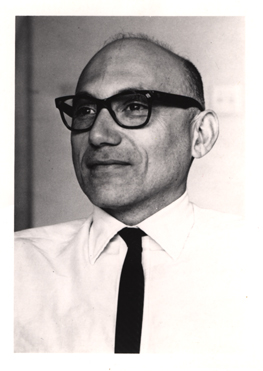Horizontal gene transfer in prokaryotes
Template:Stub Horizontal gene transfer is common among bacteria, even very distantly-related ones. This process is thought to be a significant cause of increased drug resistance; when one bacterial cell acquires resistance, it can quickly transfer the resistance genes to many species. Enteric bacteria appear to exchange genetic material with each other within the gut in which they live. There are three common mechanisms for horizontal gene transfer:
- Bacterial transformation , the genetic alteration of a cell resulting from the introduction, uptake and expression of foreign genetic material, generally DNA(see this animation with audio explanation). This process is relatively common in certain naturally transformable bacteria, such as the soil bacterium Bacillus subtilis, but less common in eukaryotes. Transformation is often used as a biotechnology to insert novel genes into bacteria for scientific research experiments, or for industrial or medical applications. See also molecular biology and biotechnology.
- Transduction, the process in which bacterial DNA is moved from one bacterium to another by a bacterial virus (a bacteriophage, commonly called a phage).
- Bacterial conjugation, a process in which a living bacterial cell transfers genetic material through direct cell-to-cell contact (see the animation conjugation in Escherichia coli).
Major discoveries on horizontal gene transfer in prokaryotes
1928. Discovery of gene transfer in bacteria started in 1928 when Frederick Griffith found Diplococcus pneumoniae bacteria could inherit characteristics (namely the "Smooth" phenotype affecting the bacterial cell coat (capsule) from non-living extracts of other bacteria, and this change was termed transformation. Oswald T. Avery at the Rockefeller Institute in 1944 showed that the transforming material of Diplococcus was DNA.
1946. Joshua Lederberg and Edward Tatum in a series of very carefully designed experiments managed very low-frequencie of genetic transfer between Escherichia coli K-12 bacteria when they were in contact with one-another [1], and this process was later found out by the recognized plasmid, fertility factor F.
1951 Joshua and Ester Lederberg , together with Zinder and Lively reported another case of gene transfer that did not need cell-to-cell contact. In this case the bacteria were Salmonella and it was later that a bacterial virus (bacteriophage) was carring the genes transduction.
Joshua Lederberg's discovery of conjugation was famously described by Salvador Luria (1947) as " to be among the most fundamental advances in the whole history of bacteriological science", giving great prominence to studies of horizontal gene transfer in bacteria during the 1950s, 60s and 70s Cite error: Invalid <ref> tag; refs with no name must have content. Transduction is currently recognized as a major route for horizontal gene movement in bacteria, and plasmid mediated bacterial conjugation is now known to be promiscuous process that enables DNA to transfer across taxonomic species, genera, phyla and domains.
Plasmids, episomes, mobile DNA in microorganisms
1958. The existence of several genetic structures that can insert within bacterial chomosomes, based on observation of the bacteriophage lambda and fertility factor in 1958 F lead F. Jacob and E. L. Wollman [2] to coin the term episome for DNA elements that have alternate modes of existence within the cell, either in the chromosome, or as autonomously resplicating stuctures. Subsequent study of these phenomenon revealed numerous occurences of mobile DNA in a wide range of organisms [3](such as the presence of insertion sequence (IS) "jumping genes" that allow F plamid insertion in the chromosome) and widespread horizontal gene transfer involving by bacteriophage, plasmids and mobile DNA in general.
- Tomoichiro Akiba and Kunitaro Ochia discover mobile antibiotic resistance genes in bacteria [4], and the horizontal transfer is later shown to mediated by plasmids that inject DNA promiscuously into other cells [5].
- James Shapiro discovers that spontaneously occuring insertions of large inserts of extra DNA can causes mutationss in the galactose genes of the bacterium Escherichia coli [6]. This discovery ultimately led to the discovery of mobile inserton sequences (IS).
References
- ↑ Lederberg, J. and Tatum, E. L. (1946). Novel genotypes in mixed cultures of biochemical mutants of bacteria. Cold Spring Habor Symposia of Quantitative Biology. 11, p113.
- ↑ Jacob, F. and Wollman, E. L. (1958) Les episomes, elements genetiques ajoutes. C. R. Acad, Sci. Paris, 247, p154.
- ↑ Berg, D. E. and Howe, M. M. (Eds.)(1989). Mobile DNA. American Society for Microbiology. Washington, D.C.
- ↑ Ochia, K. Yamanaka, T. Kimura, K. and Sawada, O. (1959). Inheritance of drug resistance (and its transfer) between Shigella strains and between Shigella and E. coli strains. Nihon Iji Shimpo 1861: p34 (In Japanese)
- ↑ S. Falcow (1975)Infectious Multiple Drug Resistance. Pion Press, London.
- ↑ Shapiro, J. (1969) Mutations caused by the insertion of genetic material into the galactose operon of Escherichia coli. J. Molec. Biol. 40, p93-109.
Further reading
- Snyder, L. and Champness, W. (2003) Molecular Genetics of Bacteria, @nd Edition, ASM Press Washington DCISBN 1-55581-204-X
